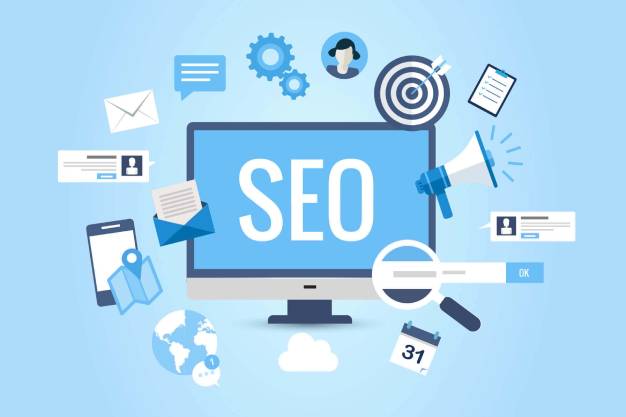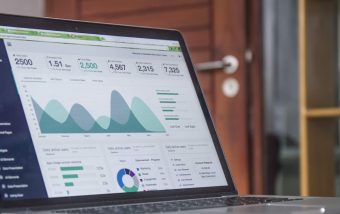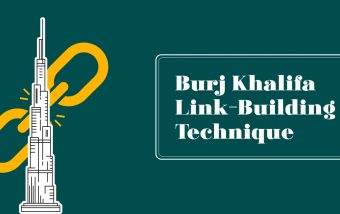How To Know If Someone Blocked You On iMessage? 5 Secret Hacks!
Apr 16, 2025

Apr 16, 2025

Apr 16, 2025

Apr 15, 2025

Apr 11, 2025

Apr 11, 2025

Apr 11, 2025

Apr 08, 2025

Mar 29, 2025
Sorry, but nothing matched your search "". Please try again with some different keywords.


Search Engine Optimization (SEO) is all about deriving results for your business. It only seems fitting that you should keep an eye on its own results as well.
The ability to measure the minutest of details and course-correct your strategy as you go along makes SEO such a valuable tool for businesses.
But what are the key metrics you should be tracking to measure your success?
There are numerous metrics that you can track and many that give you a false sense of success. We pick out the right ones that help you grow in the long run.
Metrics or Key Performance Indicators (KPIs) are an indispensable part of an SEO strategy. In simple words, they let you see whether the tactics you have employed are working as desired or not.
They let you focus on individual aspects of your strategy as well as give a bigger picture, helping in creating a comprehensive SEO strategy. They identify areas that need improving and how prior improvement has affected your overall performance.
Most importantly, they help you avoid spending your time and money on less than effective methods and identify tools that work best for you.
Without further ado, let us take a look at the most important metrics that help determine the success of your SEO strategy.

Organic traffic can be defined as website hits that are not from paid sources. Views on content that come through organic search results, such as Google and Yahoo. It seems counter-intuitive to focus on views that are essentially free when you spend so much money and effort on paying for them.
But those are the ones that truly bring engagement. Organic traffic helps your brand much more than paid traffic does. This is because it is a result of a potential customer considering you to be a genuine option for the solution to their problems.
Traffic that is driven by sincere interest increases your chances of conversions. If you are generating fewer than expected organic views, your focus should be on creating riveting content that drives traffic to your site.
You can also do this by focusing on specific links and creating your strategy around them. SaaS link building helps you build links that drive impact. It goes over and above traffic, helping you enhance MRR and activations as well.
While organic traffic helps you gauge your reach in the online space, conversions are the metric that helps you determine the impact of your reach. They describe visitors and viewers as becoming paid customers.
If your business is in the early stages, you can include hot leads into the group as well. This will give a better idea of what tactics are working and push prospects to engage more with you. Just be sure to set a realistic benchmark for a practical approach.
Conversions are a great way to measure success without really accounting for monetary gains. Sometimes, businesses are so wrapped in the profits that they forget that leads and conversions are the stepping stones to that success.
Moreover, they are a direct result of your marketing efforts. They show which tactic is working and which aspects desire more work. They are easy to track as well and are available in Google Analytics.
As much as we want to focus on growth and not define it in monetary terms, earning profits is still the number one goal of a business. Return on investment (ROI) lets you know how much you earn overspending on an investment.
It’s as simple as that: you should be making more money than you are spending. Any and all tactics should be measured on that scale. That being said, ROI should not be the sole indicator of success.
Coupling the ROI with other metrics, such as organic traffic and conversions, helps you give a clearer picture. For example, if your ROI is not high enough but you have a high number of hot leads, then it should be taken as a positive sign.
It means that your marketing efforts are generating a good impact on the target audience. They are on the path to being successful in the near future, even though it is reflected as of now in the ROI.
There are various tools available that help you optimize every aspect of a page to rank better on search engines. When a page lags behind in rankings, it is usually because a few elements do not fall in place instead of the whole page being faulty.
This metric helps you recognize the areas that need improvement. The elements considered under it are keywords as well as related keywords in headings and subheadings, links to internal and external sources, image alt tags, and keyword density in general.
Pinpointing the one area that is underperforming helps you identify the problem and improve on it. It also saves you time and money as you don’t have to redo complete pages to enhance your rankings.
Click-through rate is a straightforward metric that tells you how many clicks your content is receiving. It is directly linked to the rankings you score and the traffic you generate. In general, the first page of Google receives as many as 90% clicks for any given query.
However, the top three links earn the most of those clicks. That is where you should ideally aim to rank. If you are getting less than desired hits on your ads and content, try to reverse engineer your titles.
That is, think of conducting the search from a prospective customer’s point of view. Then, make sure your title matches the search intent. If you can, include a CTA in the title itself. Make it stand out by using dashes, quotations, etc.
Make sure the URL contains the primary keyword. Shorter URLs work better than longer, confusing ones. Lastly, simply structuring your page with subheadings and lists goes a long way in improving your content and increasing your CTR.
A bounce rate describes the percentage of users that leave your website without taking any action or don’t visit more than a single page. It is a metric no business wants to look at, but it is crucial to improve your SEO.
An average internet user leaves a webpage within 15 seconds anyway. The trick is to make them stay in a way that is meaningful. If you have a high bounce rate, that means you are not able to capture your visitors’ attention and engage with them, and are thus missing out on opportunities.
Social media platforms like Instagram and Tiktok have aced the formula of engaging their users to make them stay on the platform as long as possible. Just like them, you need to ensure that the content you offer truly lines with the search intent.
Simple tweaks can also go a long way in reducing the bounce rate. Improving the speed at which the page scrolls, using legible fonts, and using color themes that are easy on the eyes are simple tricks that can do wonders for your bounce rate.
Keyword rankings have forever been a pillar of SEO. They denote where a web page ranks on results for a particular keyword on search engines. For the longest time, keywords have been a straightforward metric that companies could ace and then forget about.
Now, they are more complicated than ever. And that is because of semantic search. This approach makes searches on the internet more human and reduces spam. But from an SEO perspective, it makes ranking for a keyword quite tricky.
Different people see different results for the same query based on their location and prior search histories. Your content should be made to rank for those local search results. Similarly, related keywords play a large role in the final results a person sees.
Therefore, you need to keep an eye on a bunch of keywords that may relate to one primary keyword. Your keyword search should include both branded and non-branded keywords. They both serve different purposes in your SEO strategy.
Branded keyword searches represent a willingness to buy. They are hot leads that would be easy to convert. Non-branded keywords, on the other hand, may not be hot leads but are worth following to influence the prospect in the long run.
Moreover, keyword rankings are a great way to oversee your organic market share as well as total opportunity. They also serve as early signs of whether your SEO strategy is on the right path or not.
While metrics serve as a great reminder of what works and what doesn’t, it’s important to trust your instincts all the same. Some strategies take a bit more time than others to show their results.
Don’t jump to conclusions quickly. If a strategy is meant for the long term, maybe give it a bit more time to flourish as opposed to pulling the plug on it right away.
Let us know in the comments what metrics you track already and what ones you would like to from now on.
Read Also:
Priya Singh is a Digital Marketer and specializes in SEO with over two years of experience. She brings her decade of experience to her current role where she is dedicated to educating & inspiring the world on how to become a better digital marketer.
View all Posts
How To Know If Someone Blocked You On iMessag...
Apr 16, 2025
7 Website Design Mistakes That Are Hurting Yo...
Apr 16, 2025
Programmable Dynamic SEO for Location-Based P...
Apr 15, 2025
Google Boba Game: How To Play This Fun Game B...
Apr 11, 2025
Which Is The Best Video Search Engine Of 2025...
Apr 11, 2025

